| Western blot (WB): | 1:500-2000 |
| Immunohistochemistry (IHC): | 1:50-400 |
| Immunocytochemistry/Immunofluorescence (ICC/IF): | 1:50-400 |
| Flow Cytometry (Fixed): | 1:50-200 |
| Enzyme linked immunosorbent assay (ELISA): | 1:100-1000 |
| (Boiling the paraffin sections in 10mM citrate buffer,pH6.0,or PH8.0 EDTA repair liquid for 20 mins is required for the staining of formalin/paraffin sections.) Optimal working dilutions must be determined by end user. | |
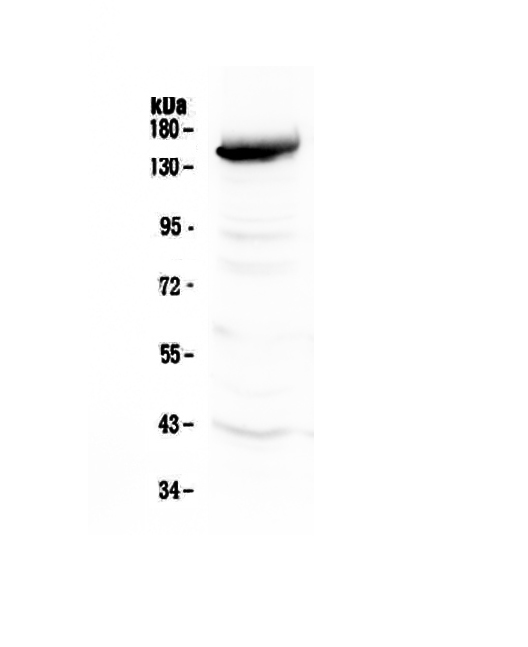
Figure 1. Western blot analysis of FLT4 using anti- FLT4 antibody (A01276-3). Lane 1: rat liver tissue lysates. anti- FLT4 antigen affinity purified polyclonal antibody (Catalog # A01276-3)probed with a goat anti-rabbit IgG-HRP secondary antibody The signal is developed using an Enhanced Chemiluminescent detection (ECL) kit (Catalog # EK1002) . A specific band was detected for FLT4 at approximately 153KD. The expected band size for FLT4 is at 153KD.
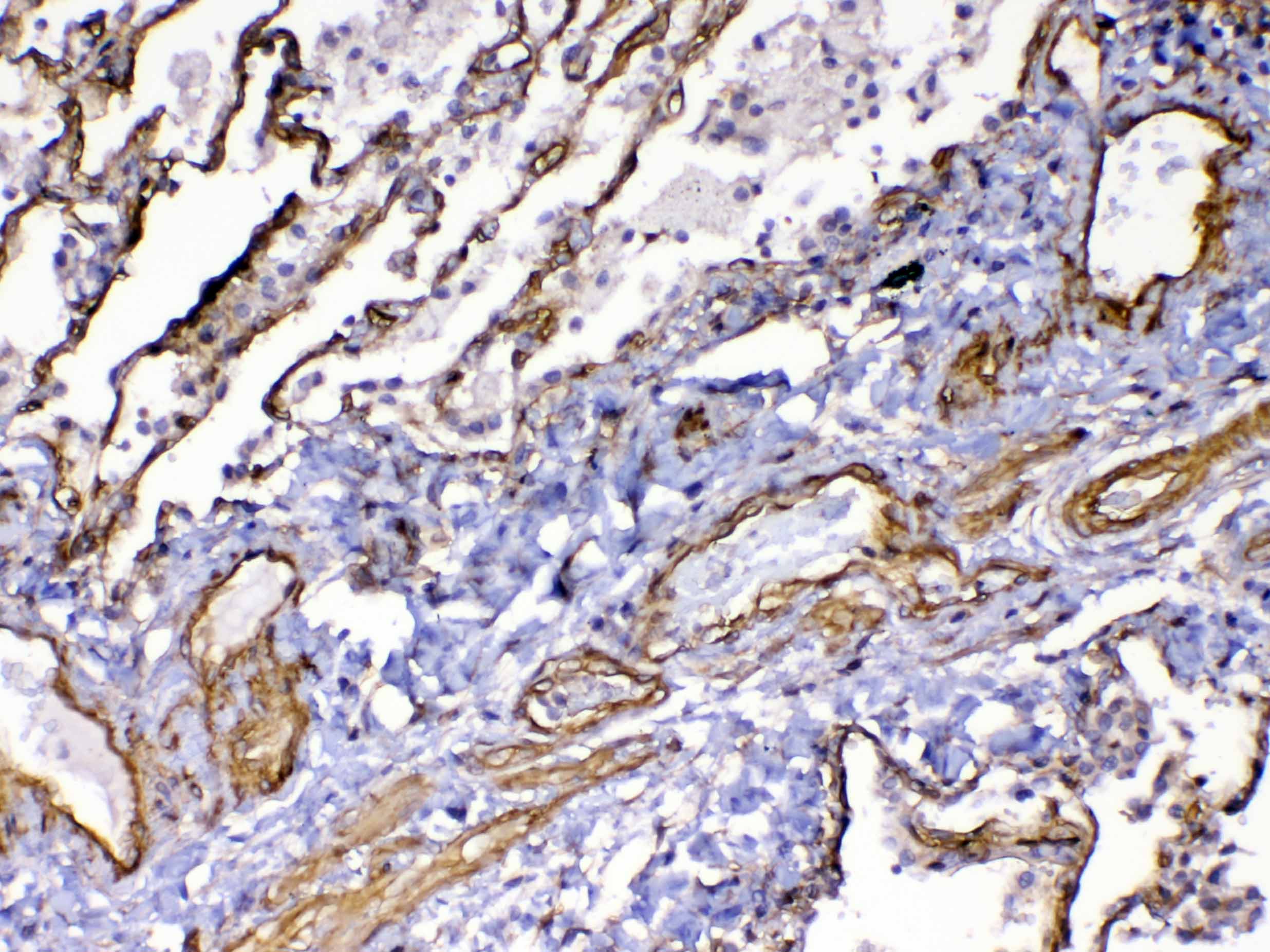
Figure 2. IHC analysis of FLT4 using anti-FLT4 antibody (A01276-3). FLT4 was detected in paraffin-embedded section of human lung cancer tissue. anti-FLT4 Antibody (A01276-3) . Biotinylated goat anti-rabbit IgG was used as secondary antibody . The tissue section was developed using Strepavidin-Biotin-Complex (SABC)(Catalog # SA1022) with DAB as the chromogen.
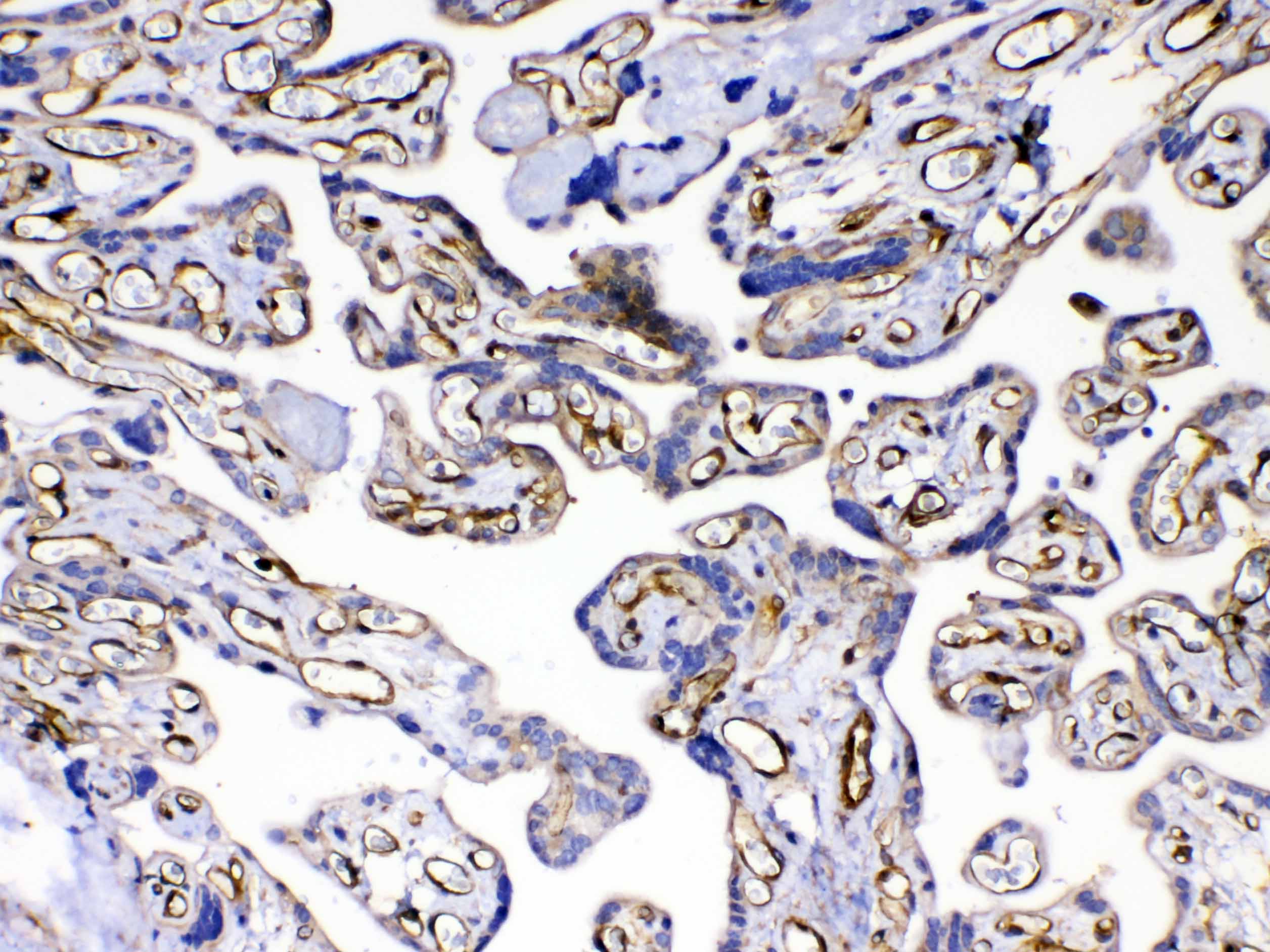
Figure 3. IHC analysis of FLT4 using anti-FLT4 antibody (A01276-3). FLT4 was detected in paraffin-embedded section of human placenta tissue. anti-FLT4 Antibody (A01276-3) . Biotinylated goat anti-rabbit IgG was used as secondary antibody . The tissue section was developed using Strepavidin-Biotin-Complex (SABC)(Catalog # SA1022) with DAB as the chromogen.
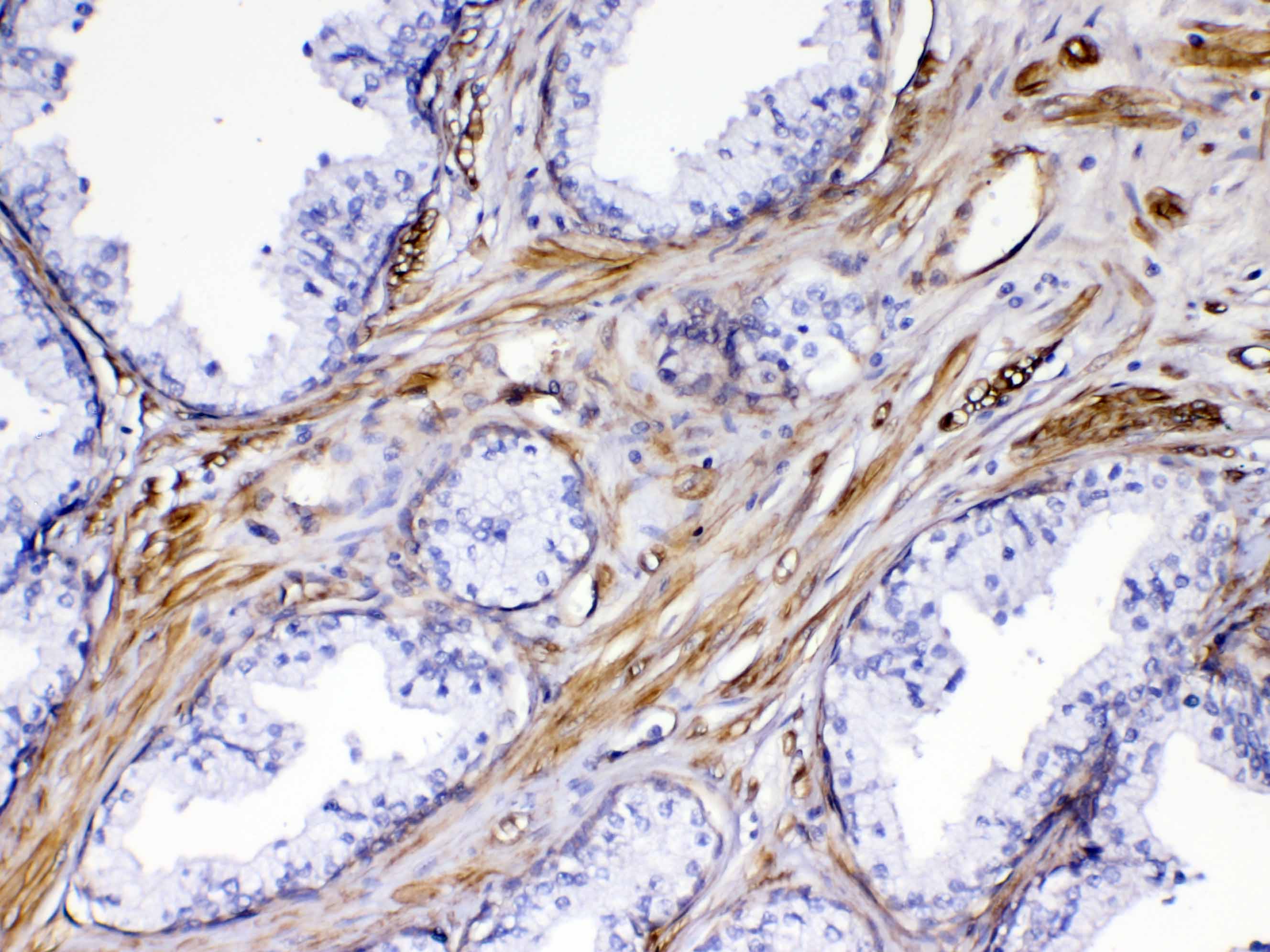
Figure 4. IHC analysis of FLT4 using anti-FLT4 antibody (A01276-3). FLT4 was detected in paraffin-embedded section of human prostatic cancer tissue. anti-FLT4 Antibody (A01276-3) . Biotinylated goat anti-rabbit IgG was used as secondary antibody . The tissue section was developed using Strepavidin-Biotin-Complex (SABC)(Catalog # SA1022) with DAB as the chromogen.

Figure 5. IHC analysis of FLT4 using anti-FLT4 antibody (A01276-3). FLT4 was detected in paraffin-embedded section of rat liver tissue. anti-FLT4 Antibody (A01276-3) . Biotinylated goat anti-rabbit IgG was used as secondary antibody . The tissue section was developed using Strepavidin-Biotin-Complex (SABC)(Catalog # SA1022) with DAB as the chromogen.
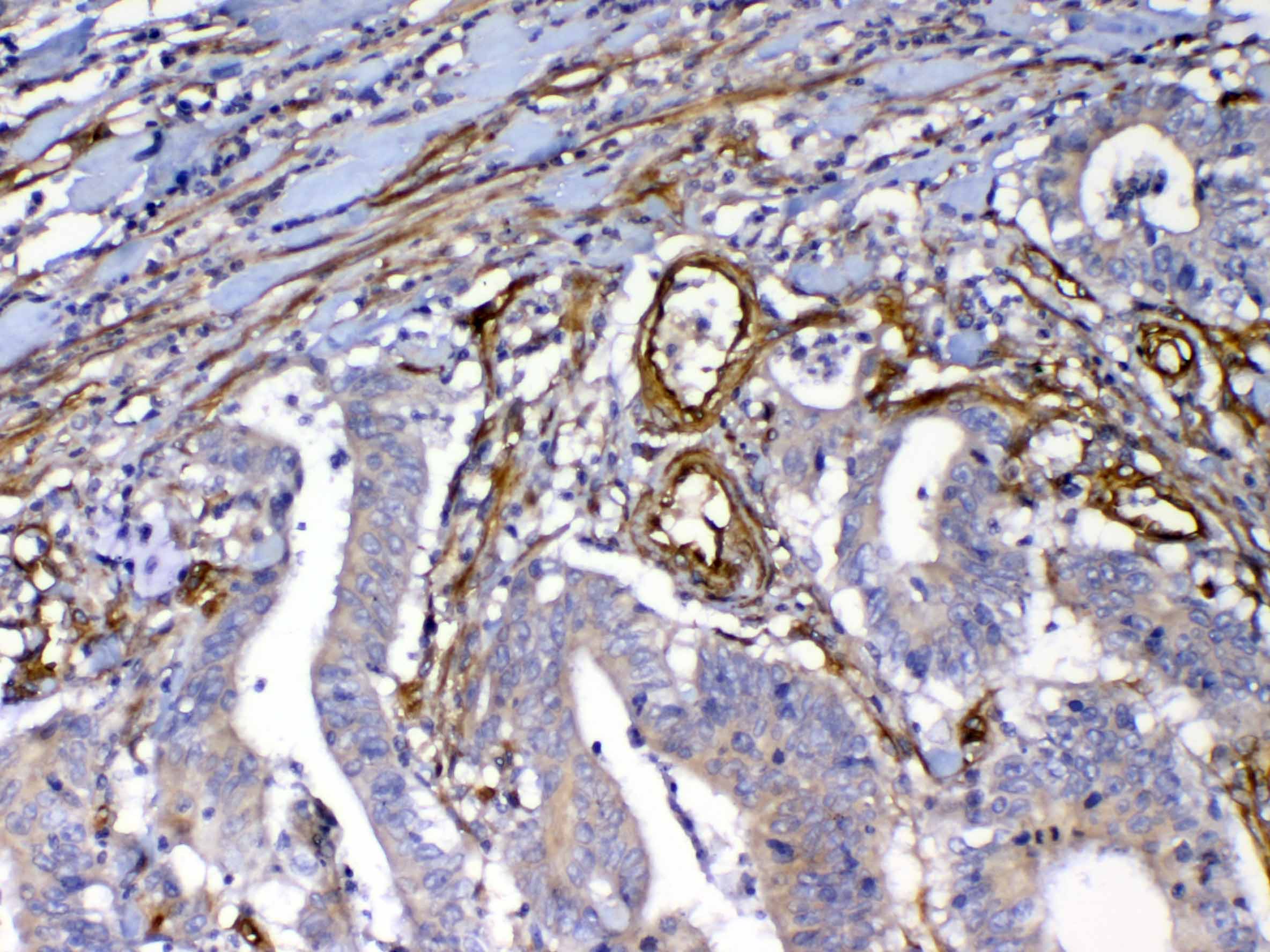
Figure 6. IHC analysis of FLT4 using anti-FLT4 antibody (A01276-3). FLT4 was detected in paraffin-embedded section of human rectal cancer tissue. anti-FLT4 Antibody (A01276-3) . Biotinylated goat anti-rabbit IgG was used as secondary antibody . The tissue section was developed using Strepavidin-Biotin-Complex (SABC)(Catalog # SA1022) with DAB as the chromogen.
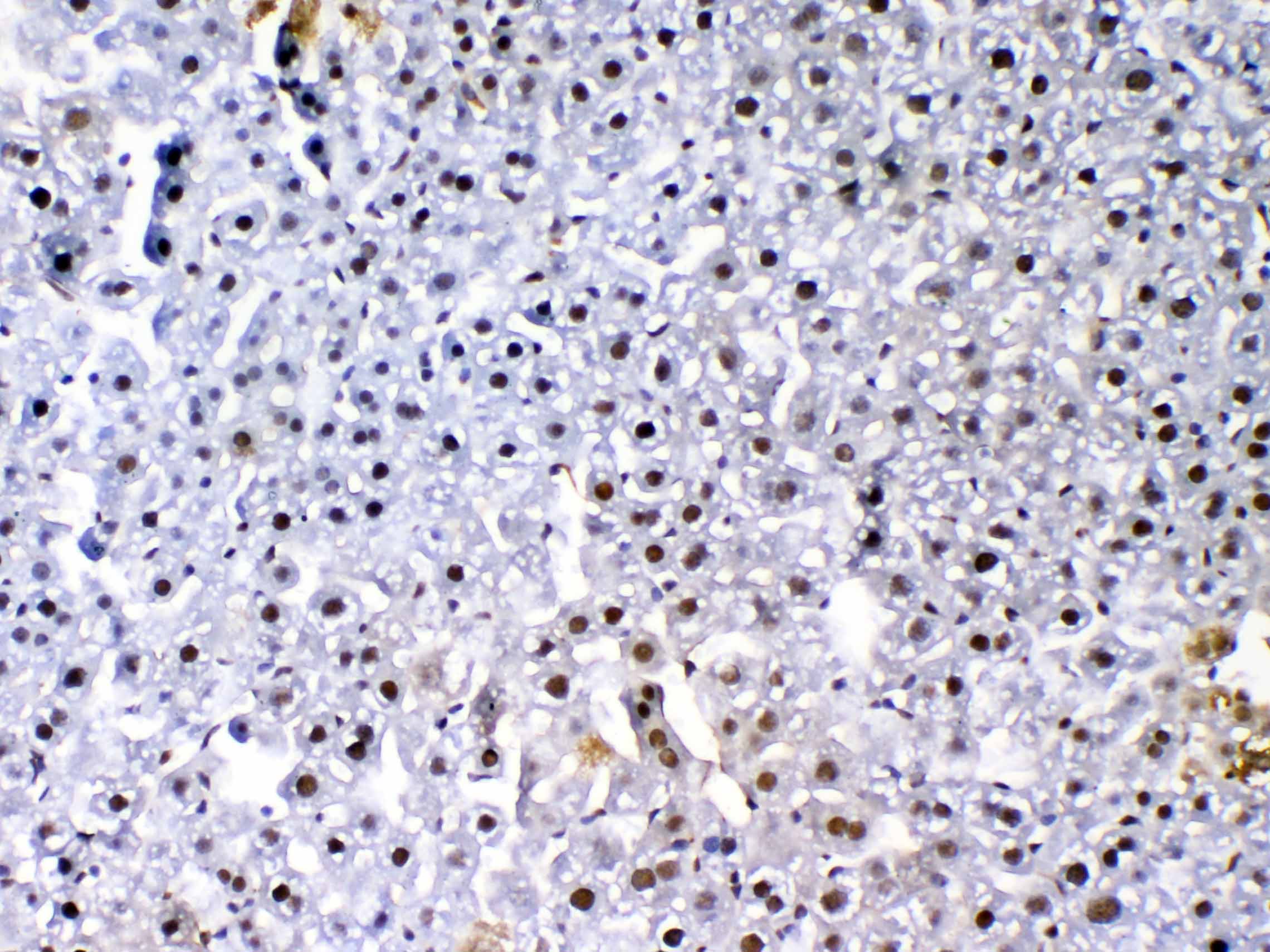
Figure 7. IHC analysis of FLT4 using anti-FLT4 antibody (A01276-3). FLT4 was detected in paraffin-embedded section of mouse liver tissue. anti-FLT4 Antibody (A01276-3) . Biotinylated goat anti-rabbit IgG was used as secondary antibody . The tissue section was developed using Strepavidin-Biotin-Complex (SABC)(Catalog # SA1022) with DAB as the chromogen.
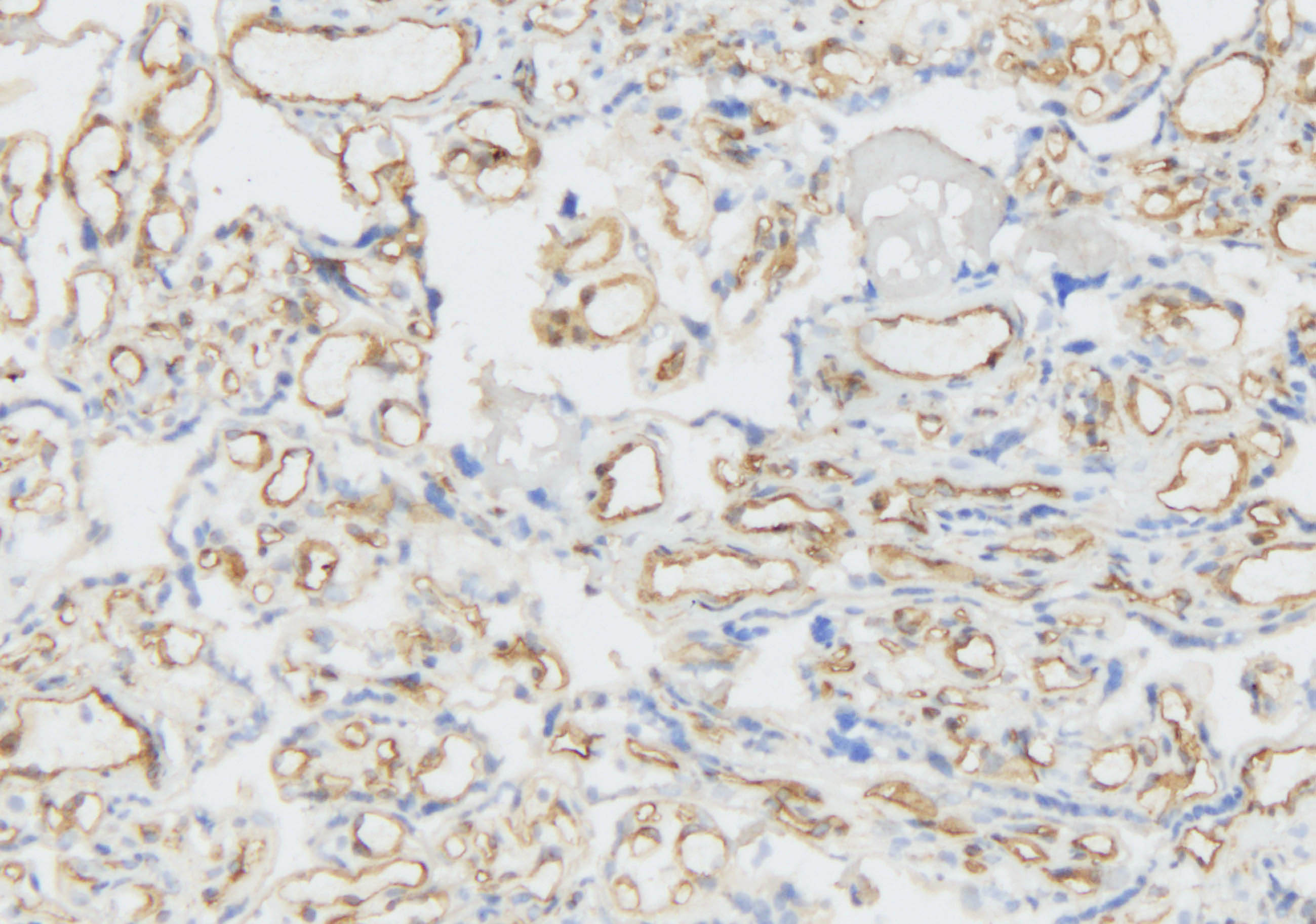
Figure 8. IHC analysis of FLT4 using anti-FLT4 antibody (A01276-3). FLT4 was detected in frozen section of human placenta tissues. The tissue section was blocked with 10% goat serum. The tissue section was then incubated with 1μg/ml rabbit anti-FLT4 Antibody (A01276-3) overnight at 4°C. Biotinylated goat anti-rabbit IgG was used as secondary antibody and incubated for 30 minutes at 37°C. The tissue section was developed using Strepavidin-Biotin-Complex (SABC)(Catalog # SA1022) with DAB as the chromogen.
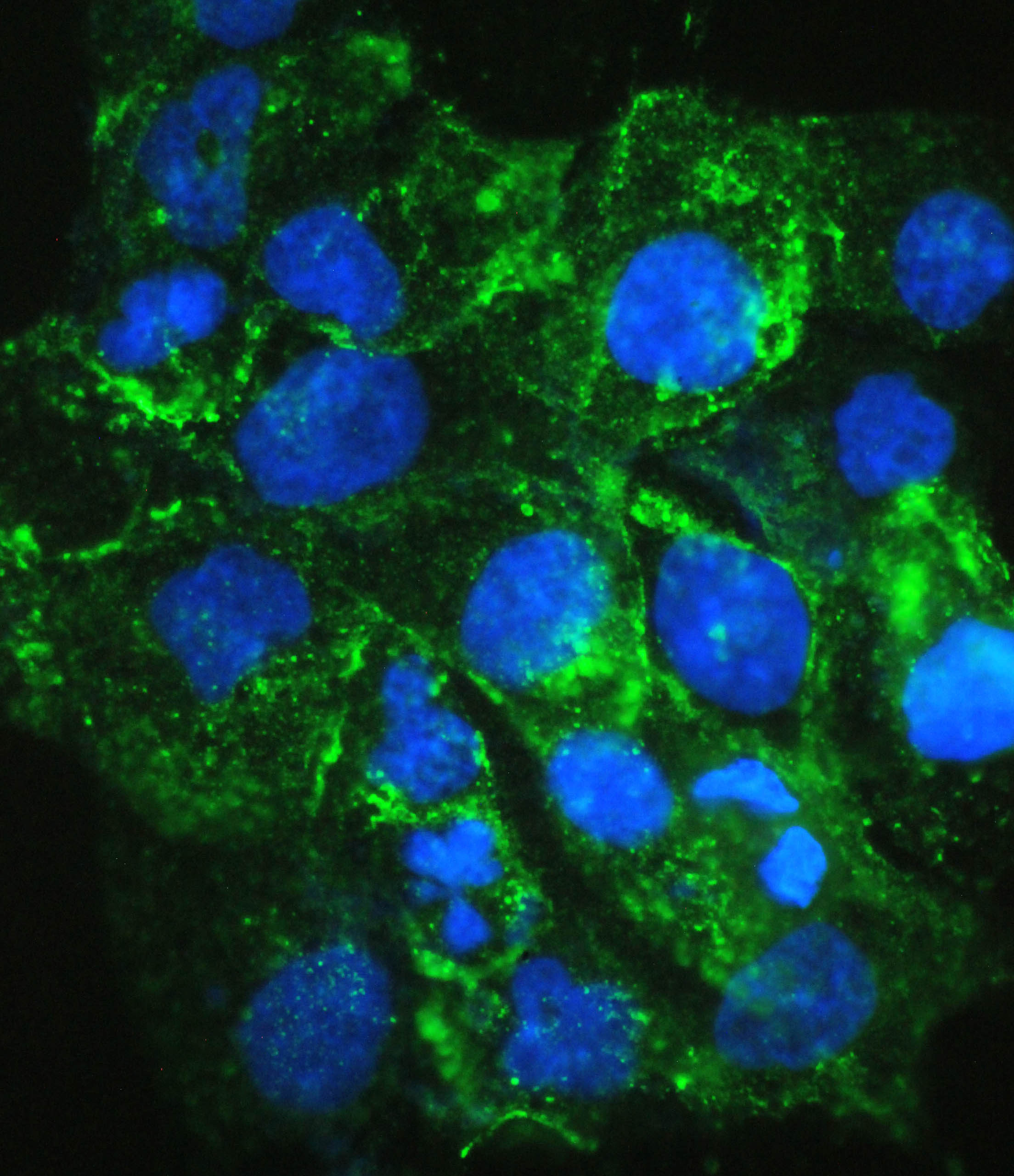
Figure 9. ICC analysis of anti- FLT4 antibody (A01276-3).was detected in immunocytochemical section of A431 cells. Cells were stained using the Dylight488-conjugated Anti-rabbit IgG Secondary Antibody (green)(Catalog # BA1127) and counterstained with DAPI (blue).
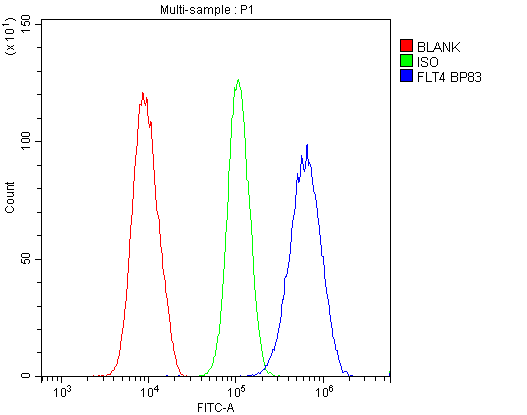
Figure 10. Flow cytometry analysis of U2OS cell(1:100) DyLight 488 conjugated goat anti-rabbit IgG(blue) was used as secondary antibody. Isotype control antibody (Green line) was rabbit IgG DyLight 488. Unlabelled sample (Red line).

Figure 1. Western blot analysis of FLT4 using anti- FLT4 antibody (A01276-3). Lane 1: rat liver tissue lysates. anti- FLT4 antigen affinity purified polyclonal antibody (Catalog # A01276-3)probed with a goat anti-rabbit IgG-HRP secondary antibody The signal is developed using an Enhanced Chemiluminescent detection (ECL) kit (Catalog # EK1002) . A specific band was detected for FLT4 at approximately 153KD. The expected band size for FLT4 is at 153KD.

Figure 2. IHC analysis of FLT4 using anti-FLT4 antibody (A01276-3). FLT4 was detected in paraffin-embedded section of human lung cancer tissue. anti-FLT4 Antibody (A01276-3) . Biotinylated goat anti-rabbit IgG was used as secondary antibody . The tissue section was developed using Strepavidin-Biotin-Complex (SABC)(Catalog # SA1022) with DAB as the chromogen.

Figure 3. IHC analysis of FLT4 using anti-FLT4 antibody (A01276-3). FLT4 was detected in paraffin-embedded section of human placenta tissue. anti-FLT4 Antibody (A01276-3) . Biotinylated goat anti-rabbit IgG was used as secondary antibody . The tissue section was developed using Strepavidin-Biotin-Complex (SABC)(Catalog # SA1022) with DAB as the chromogen.

Figure 4. IHC analysis of FLT4 using anti-FLT4 antibody (A01276-3). FLT4 was detected in paraffin-embedded section of human prostatic cancer tissue. anti-FLT4 Antibody (A01276-3) . Biotinylated goat anti-rabbit IgG was used as secondary antibody . The tissue section was developed using Strepavidin-Biotin-Complex (SABC)(Catalog # SA1022) with DAB as the chromogen.

Figure 5. IHC analysis of FLT4 using anti-FLT4 antibody (A01276-3). FLT4 was detected in paraffin-embedded section of rat liver tissue. anti-FLT4 Antibody (A01276-3) . Biotinylated goat anti-rabbit IgG was used as secondary antibody . The tissue section was developed using Strepavidin-Biotin-Complex (SABC)(Catalog # SA1022) with DAB as the chromogen.

Figure 6. IHC analysis of FLT4 using anti-FLT4 antibody (A01276-3). FLT4 was detected in paraffin-embedded section of human rectal cancer tissue. anti-FLT4 Antibody (A01276-3) . Biotinylated goat anti-rabbit IgG was used as secondary antibody . The tissue section was developed using Strepavidin-Biotin-Complex (SABC)(Catalog # SA1022) with DAB as the chromogen.

Figure 7. IHC analysis of FLT4 using anti-FLT4 antibody (A01276-3). FLT4 was detected in paraffin-embedded section of mouse liver tissue. anti-FLT4 Antibody (A01276-3) . Biotinylated goat anti-rabbit IgG was used as secondary antibody . The tissue section was developed using Strepavidin-Biotin-Complex (SABC)(Catalog # SA1022) with DAB as the chromogen.

Figure 8. IHC analysis of FLT4 using anti-FLT4 antibody (A01276-3). FLT4 was detected in frozen section of human placenta tissues. The tissue section was blocked with 10% goat serum. The tissue section was then incubated with 1μg/ml rabbit anti-FLT4 Antibody (A01276-3) overnight at 4°C. Biotinylated goat anti-rabbit IgG was used as secondary antibody and incubated for 30 minutes at 37°C. The tissue section was developed using Strepavidin-Biotin-Complex (SABC)(Catalog # SA1022) with DAB as the chromogen.

Figure 9. ICC analysis of anti- FLT4 antibody (A01276-3).was detected in immunocytochemical section of A431 cells. Cells were stained using the Dylight488-conjugated Anti-rabbit IgG Secondary Antibody (green)(Catalog # BA1127) and counterstained with DAPI (blue).

Figure 10. Flow cytometry analysis of U2OS cell(1:100) DyLight 488 conjugated goat anti-rabbit IgG(blue) was used as secondary antibody. Isotype control antibody (Green line) was rabbit IgG DyLight 488. Unlabelled sample (Red line).











